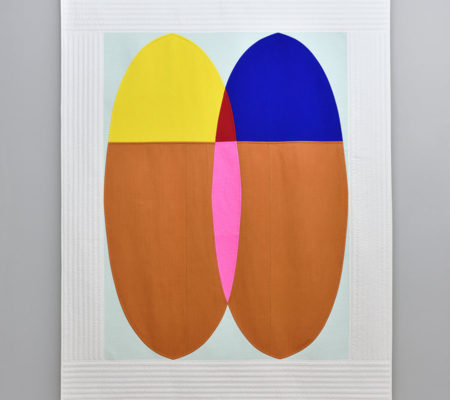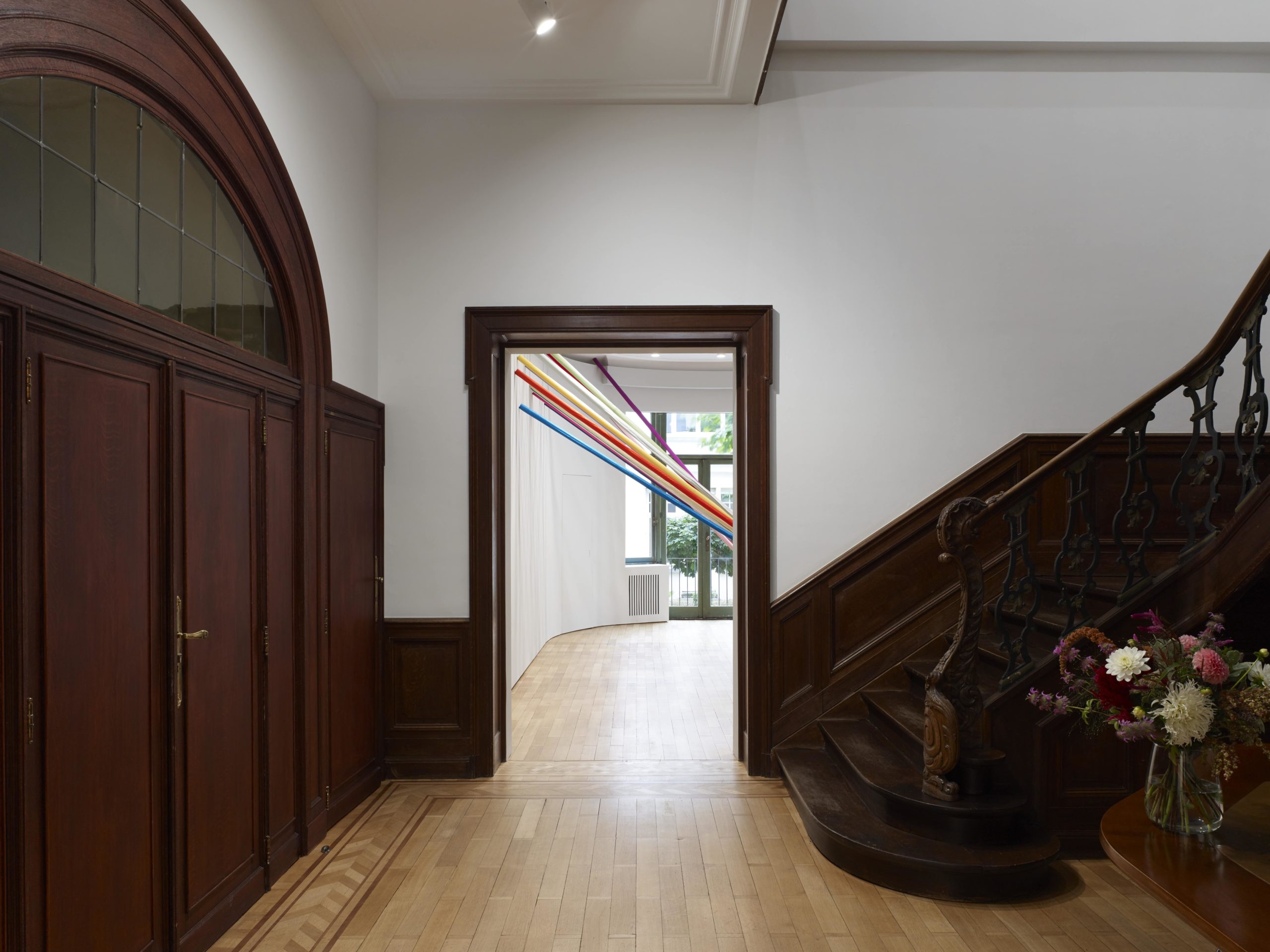
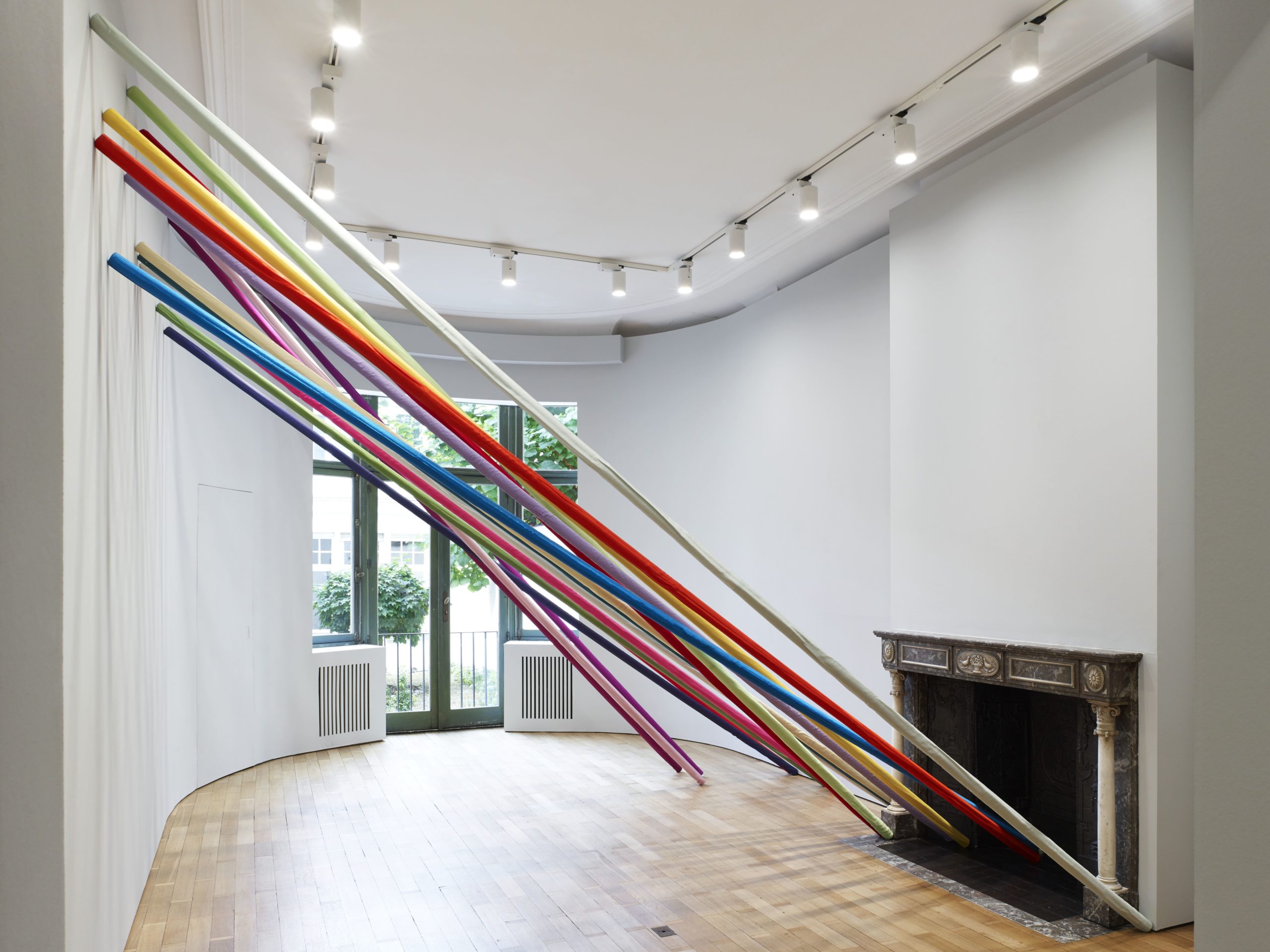
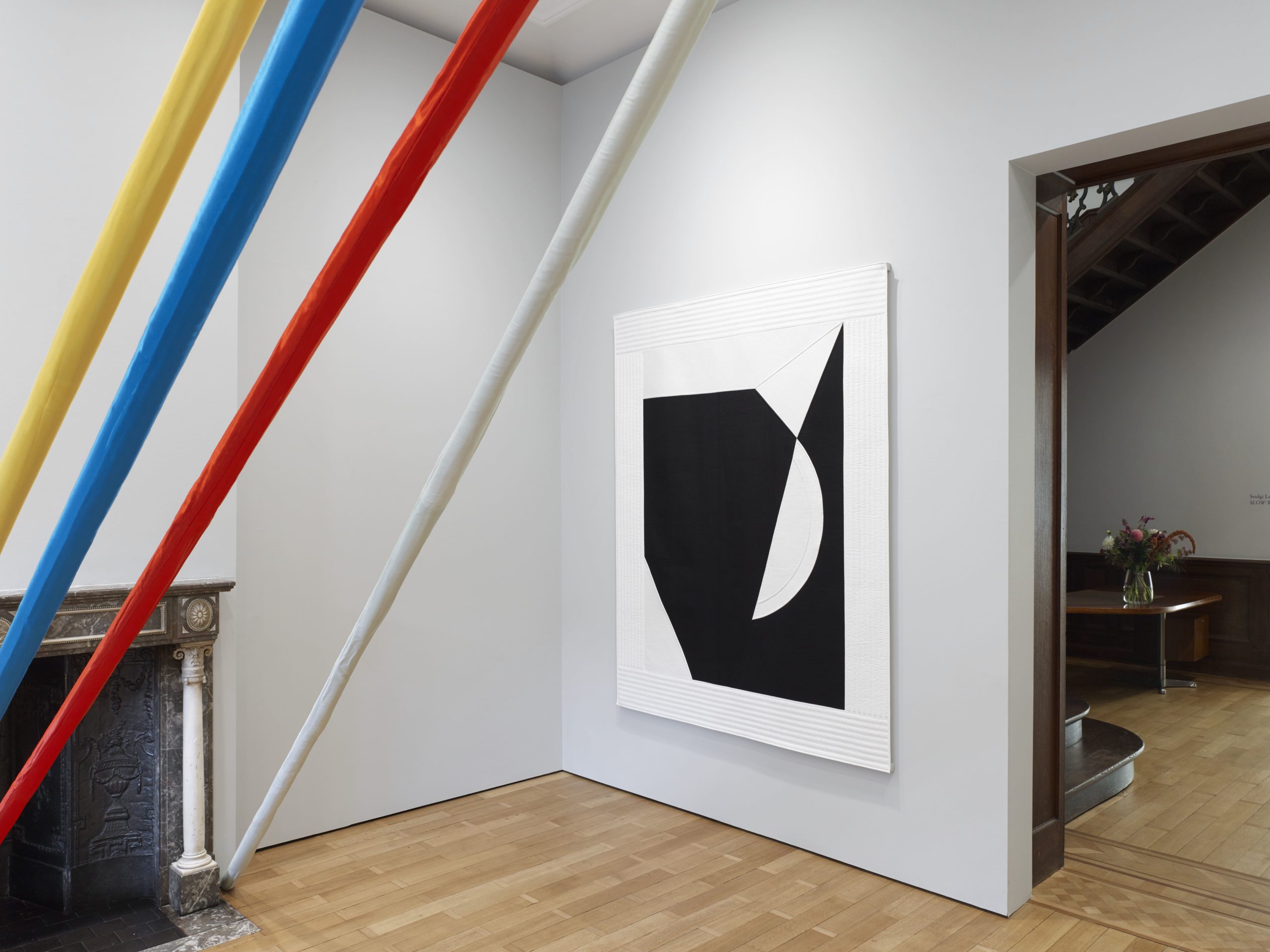
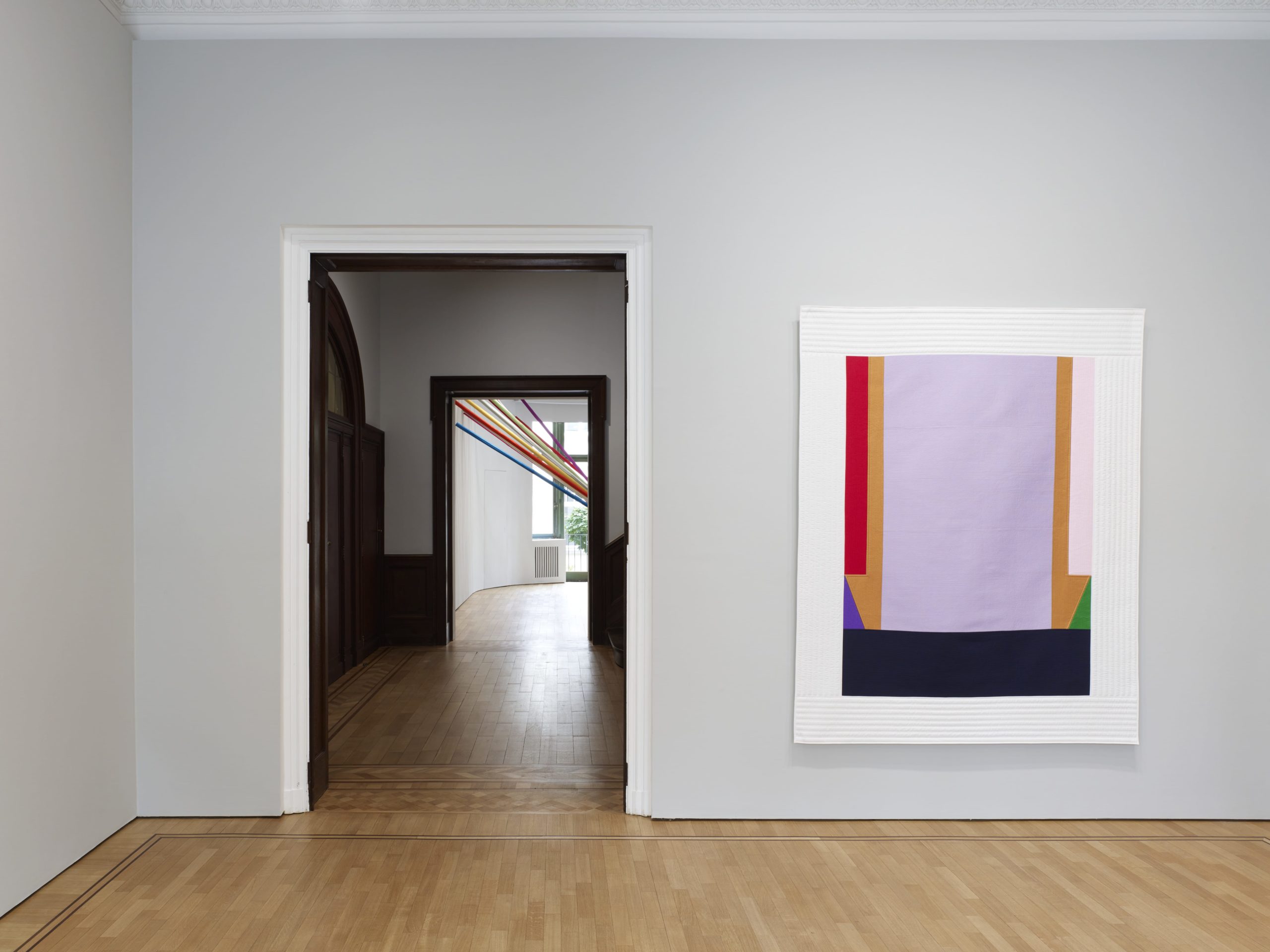
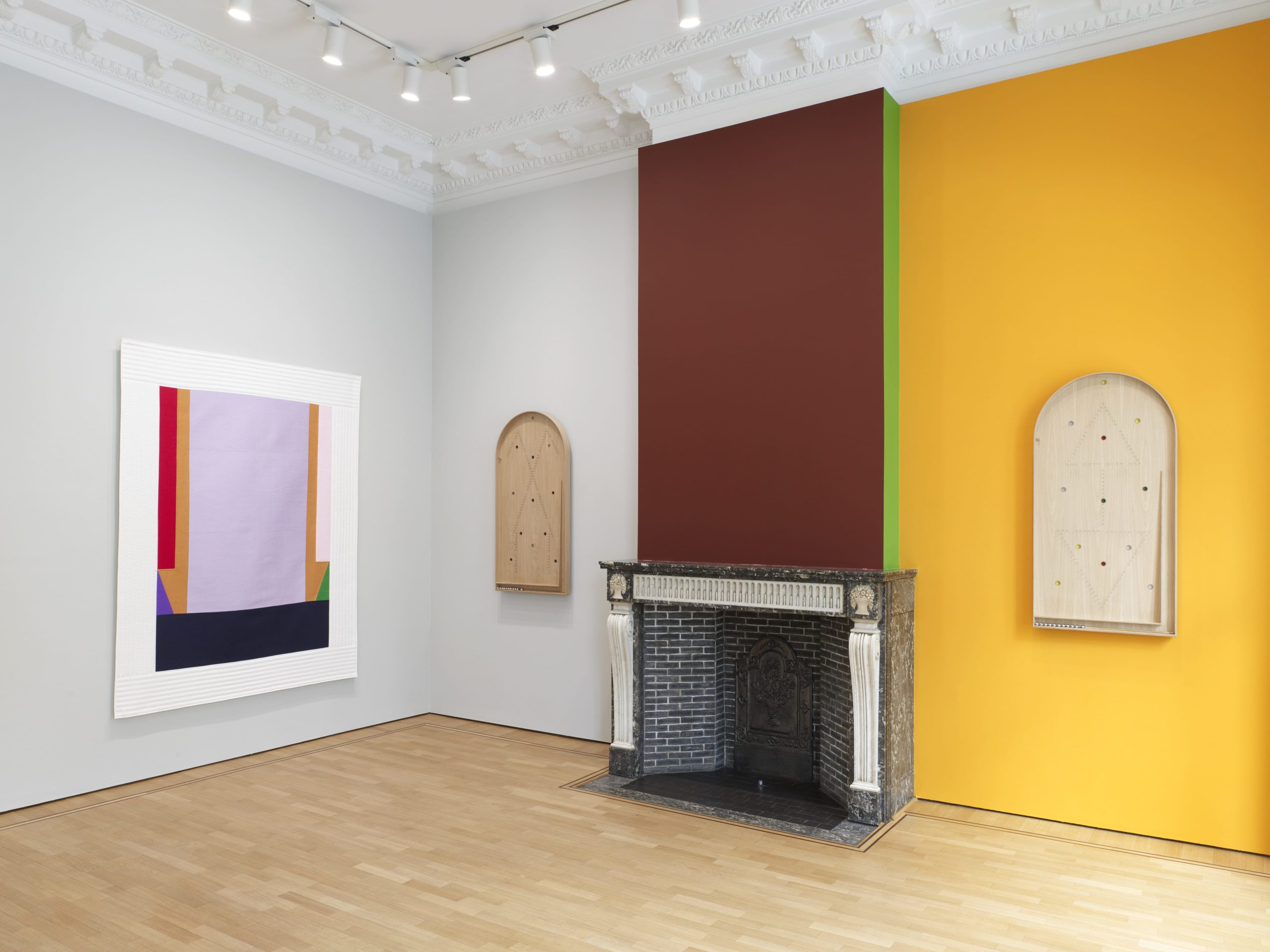
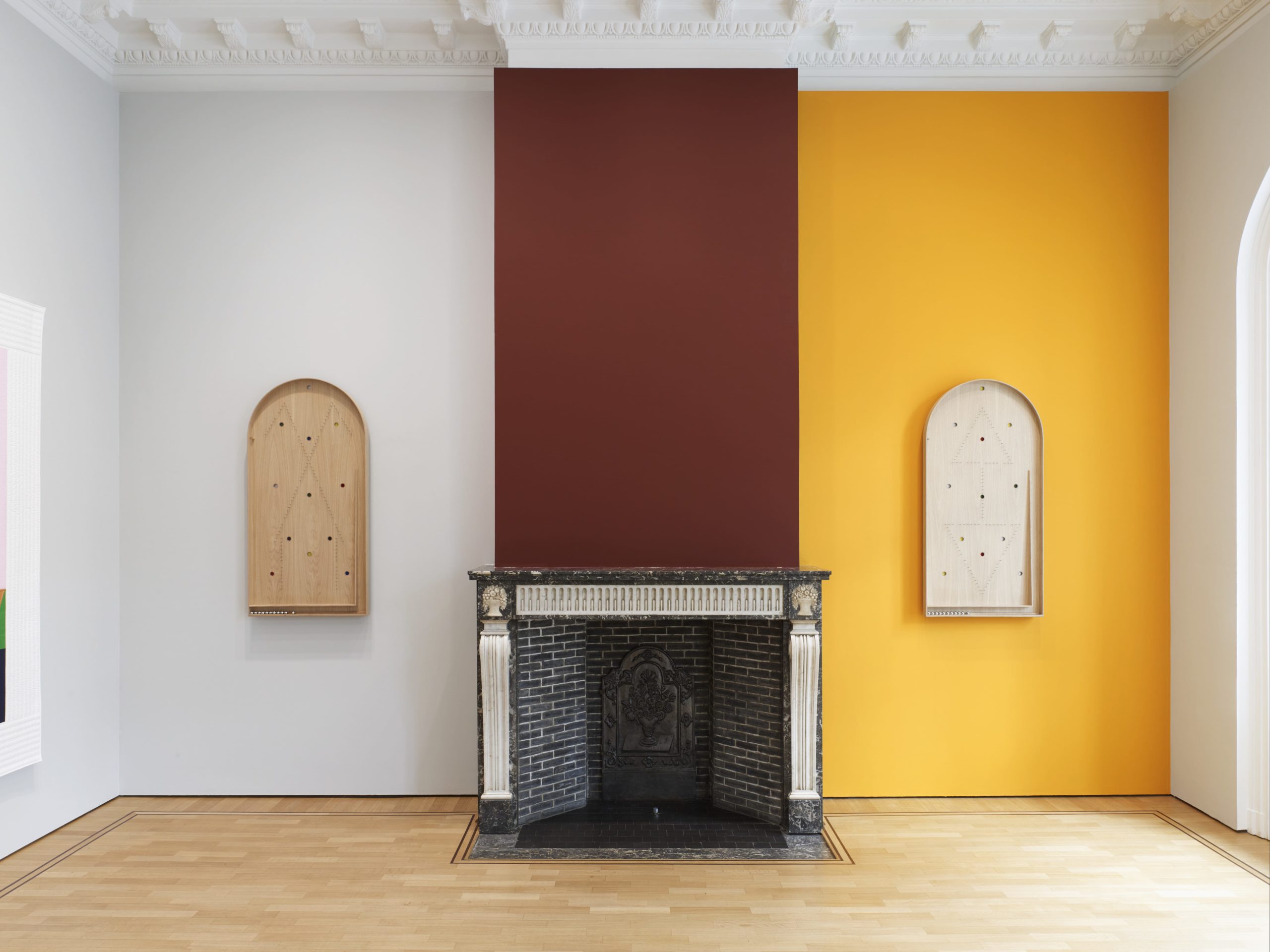
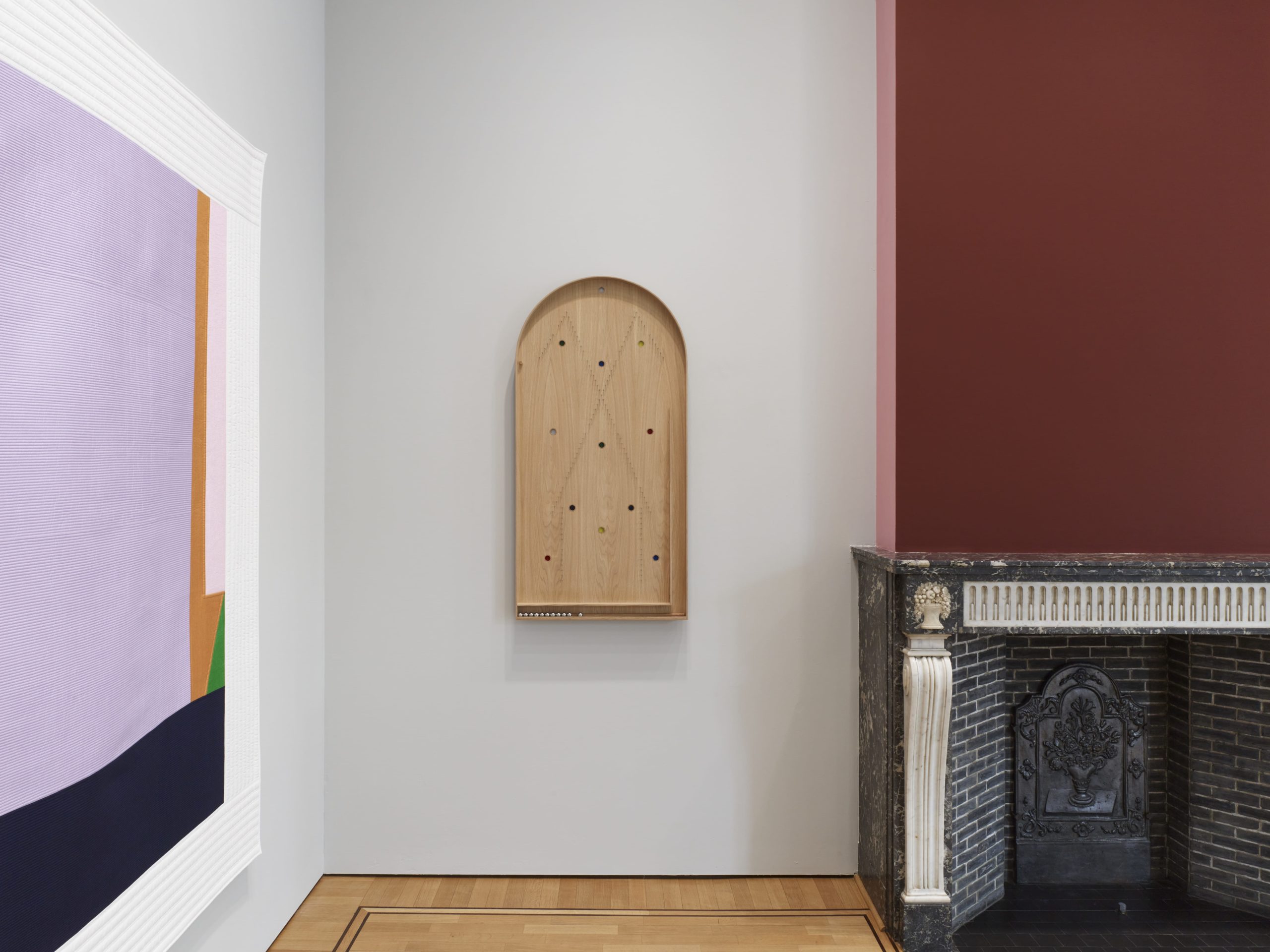
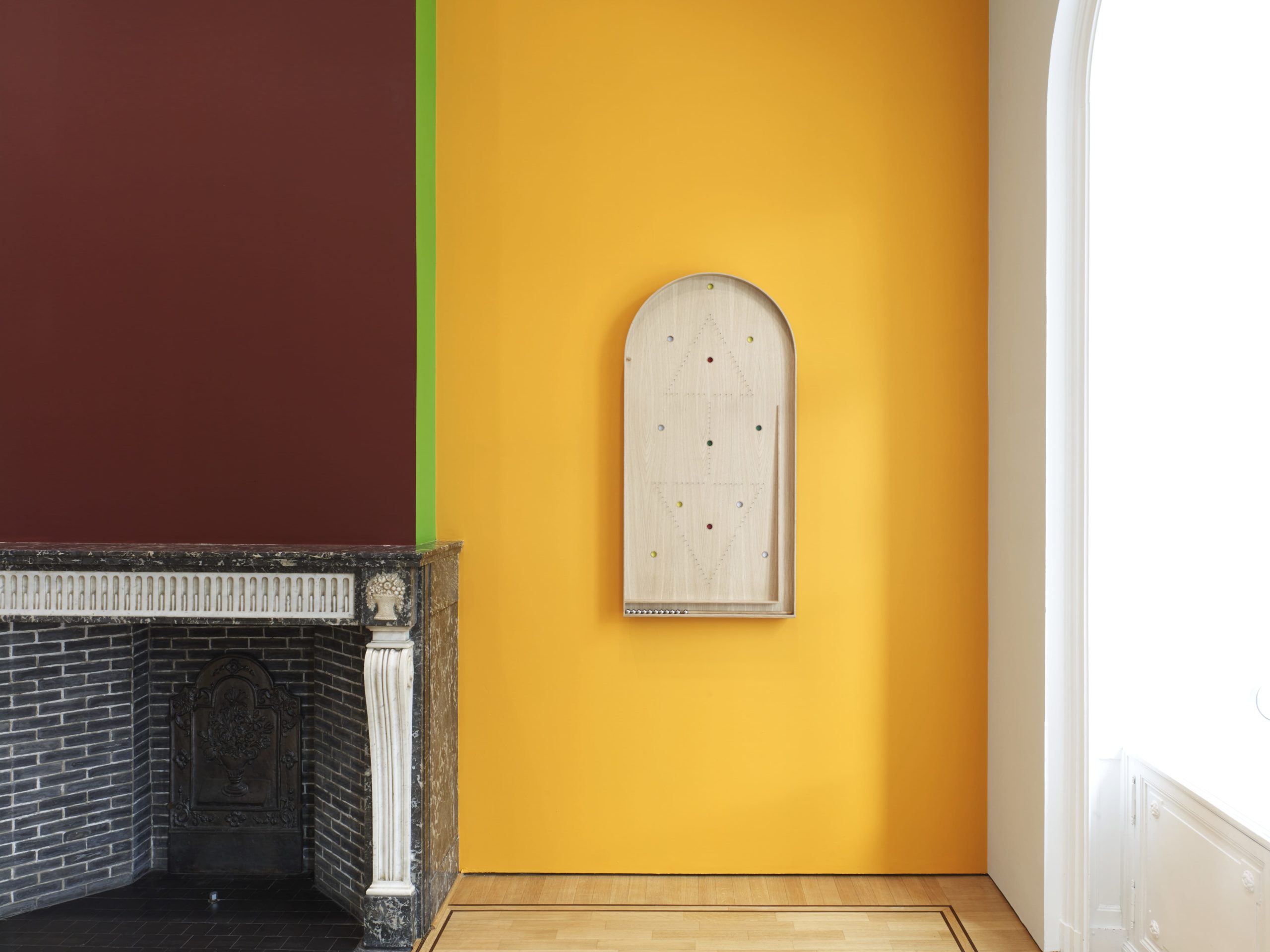
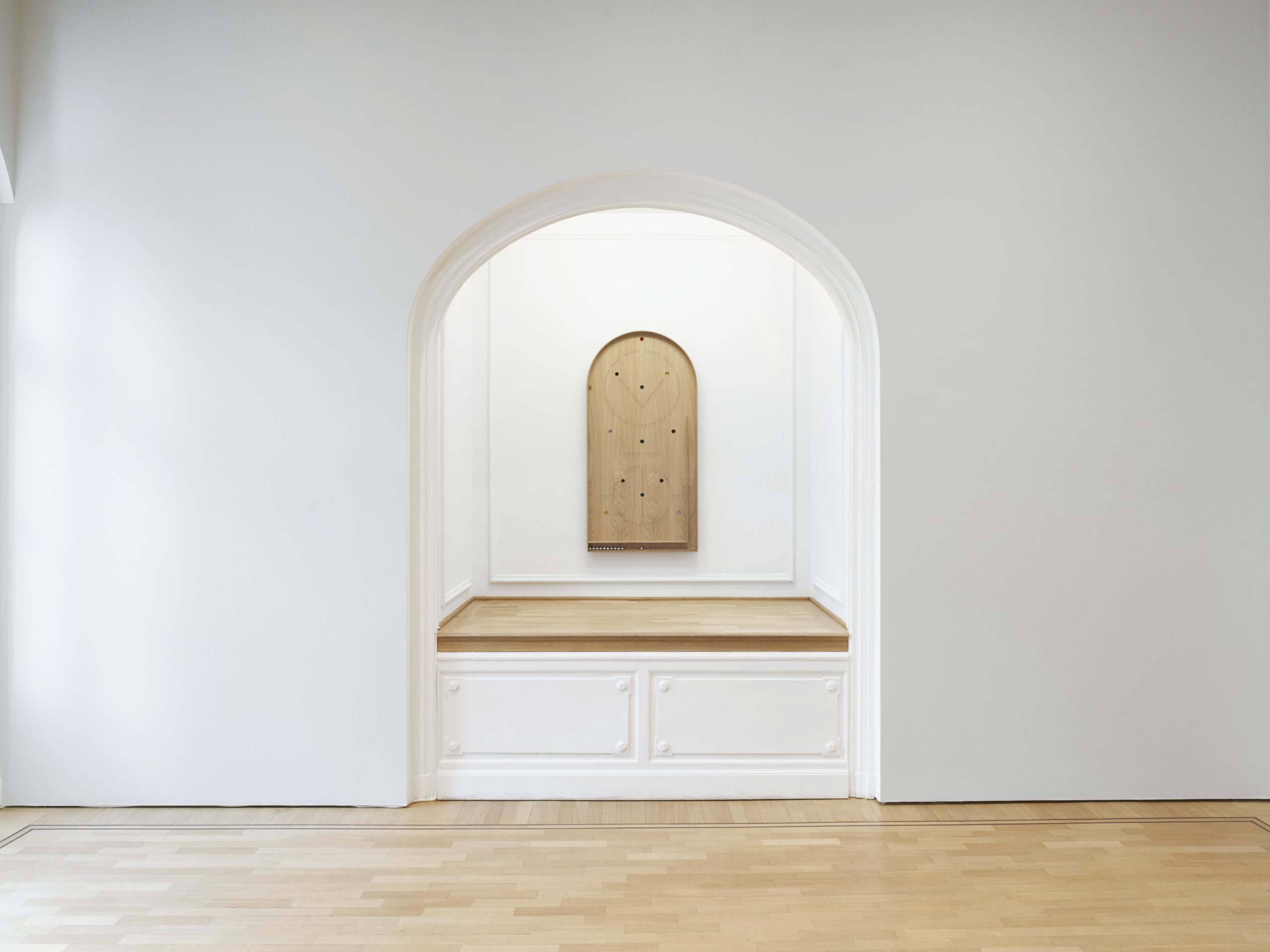
SEULGI LEE | SLOW WATER | MENDES WOOD DM BRUSSELS
Hors les murs 8 September 2022 - 8 October 2022Address : 13 rue des Sablons, 1000 Brussels Belgium
Near the indecent game boards, a blanket is installed: U: Friend with whom we used to play stilt (wooden horse) = Old friend (2022, Mendes Wood DM, Brussels) (U: The water in which an ax has been boiled = tasteless, 2022, Jousse Entreprise, Paris). Being enveloped in words and color is the ambition of U, a set of quilts that Seulgi Lee has been working on since 2014. Made in the Korean Nubi tradition (a padded quilting technique), these handmade textile objects were sewn line by line by artisans in Tongyeong according to an over 500 year-old tradition. This quilting technique retains heat by allowing air to circulate through the impressions created by the cotton padding. These blankets were very common in Korean homes until the 1980s. Symbolic animal figures were sewn onto the cotton fragments in silk thread and could be detached for practical purposes, allowing the parts with bodily contact to be washed. Then, in the 1980s, they began using simple colored strips as ornaments. In Seulgi Lee’s compositions, the colored strips have been replaced by a more complex geometry. Like BAGATELLE, each blanket operates as a translation from a statement in oral tradition into textile form. Chosen by the artist for its whimsical and humorous accents (the subtitles given to each U testify to this), the blanket “enunciates” a popular proverb by way of colored abstractions. To glide into the U, a letter whose shape is also a receptacle, means plunging into Korean vernacular tradition, and dreaming of such “tropes” in which proverbial stilts (échasses) and axes (haches) meet, as the titles suggest. If these abstractions bear witness to the dream of a fusion between art and craft envisaged by historical modernism, they also reject, in their reference to functionality, the dream of a pure, intransitive abstraction that emerged in the formalism of the second half of the 20th century.
Once again, in the Jousse Entreprise gallery, Seulgi Lee confronts the public with a modernist symbol, taking a resolutely anti-narrative standpoint and singing the praises of flatness and frontality by means of an immense wooden grid suspended from the ceiling. Here, Mondrian’s grid is observed from below and not from the front. Dozens of slats criss cross each other, suspended in air, recalling the Korean tradition of Moonsal (a lattice door made of woven wooden slats that delimits space in traditional houses); the intertwining lines of Chinese characters, and the geometric mashrabiya shown at the Museum of Wooden Arts and Crafts in Fez (Morocco) which fascinated Seulgi Lee during a visit in 2019. Like BAGATELLE‘s marbles moving across the geometric board structures, the audience wanders under the grid whose subtle gradations of color have diverse origins, such as an artificial waterway in the 8th-century Korean villa of Poseokjeong, a Roman fresco in the Villa Livia, decorative Dancheong paintings known for their sophisticated polychromy, and the waterways of the port city of Incheon. The grid can be seen not only from below but also from the side. Its shape and colors change as the audience moves around. This grid, which in the history of Western modernism celebrates the principles of autonomy and purification, now allows the vernacular and folklore to seep in, referring to various ancestral craft traditions all at once: Korean, Moroccan, and Roman antiquity, not to mention the Yellow Sea. Sometimes you just have to look up to travel in space, time, and from one field to another in art and popular culture.
Exhibition Views : Kristien Daem
Vernissage : 07/09/2022 12:00 am
Exhibition's artists >
